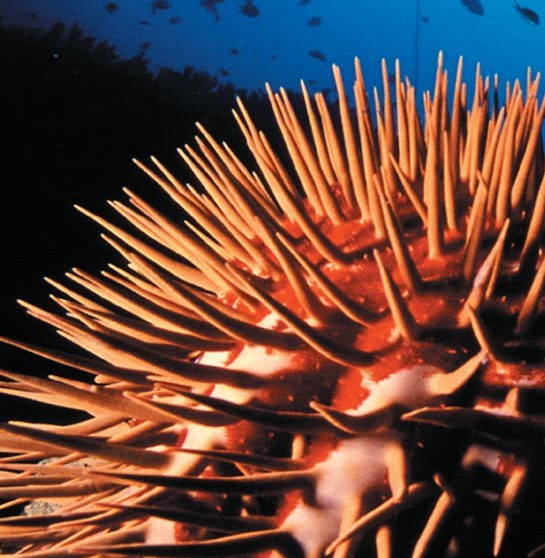Starfish wait years to attack
 A new study shows how crown of thorns starfish lie in wait as algae-eating young before attacking coral.
A new study shows how crown of thorns starfish lie in wait as algae-eating young before attacking coral.
The coral-eating crown of thorns starfish that devastate tropical reefs can lie in wait as harmless young herbivores for more than six years while coral populations recover from previous attacks or coral bleaching, the new research shows.
The diet of the juvenile starfish is algae. Juveniles remain on this vegetarian diet for at least four months and then, if there is an abundance of coral, the starfish typically switch to a coral diet.
Research by Dione Deaker, a PhD student at the University of Sydney, and her adviser Professor Maria Byrne, has shown that juvenile starfish can delay their diet shift to coral for at least 6.5 years.
“This Peter Pan effect means that populations of juvenile crown of thorns starfish can build up on reefs in the absence of coral,” Ms Deaker said.
“They could become a hidden army waiting to consume reefs as the reefs recover.”
As adults they grow to nearly a full metre in diameter and have a voracious appetite for coral, devastating critical reef habitats on the Great Barrier Reef and across the Indo-Pacific.
“Despite the notoriety of the large adult starfish and their propensity for coral prey, the juveniles eat algae. For outbreaks to arise, these algal-eating juveniles must transition into coral predators,” said Professor Byrne from the Sydney Environment Institute.
The new study showed that in response to coral scarcity, crown of thorns starfish can remain as herbivores for at least 6.5 years.
The experts say that starfish modelling needs to account for the possibility that an extended herbivorous phase of crown of thorns starfish has the potential to allow the formation of a reserve population in reef habitats.







 Print
Print